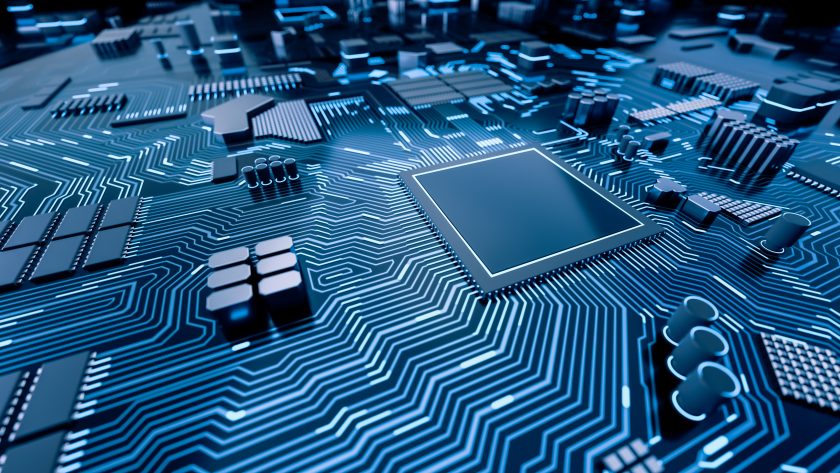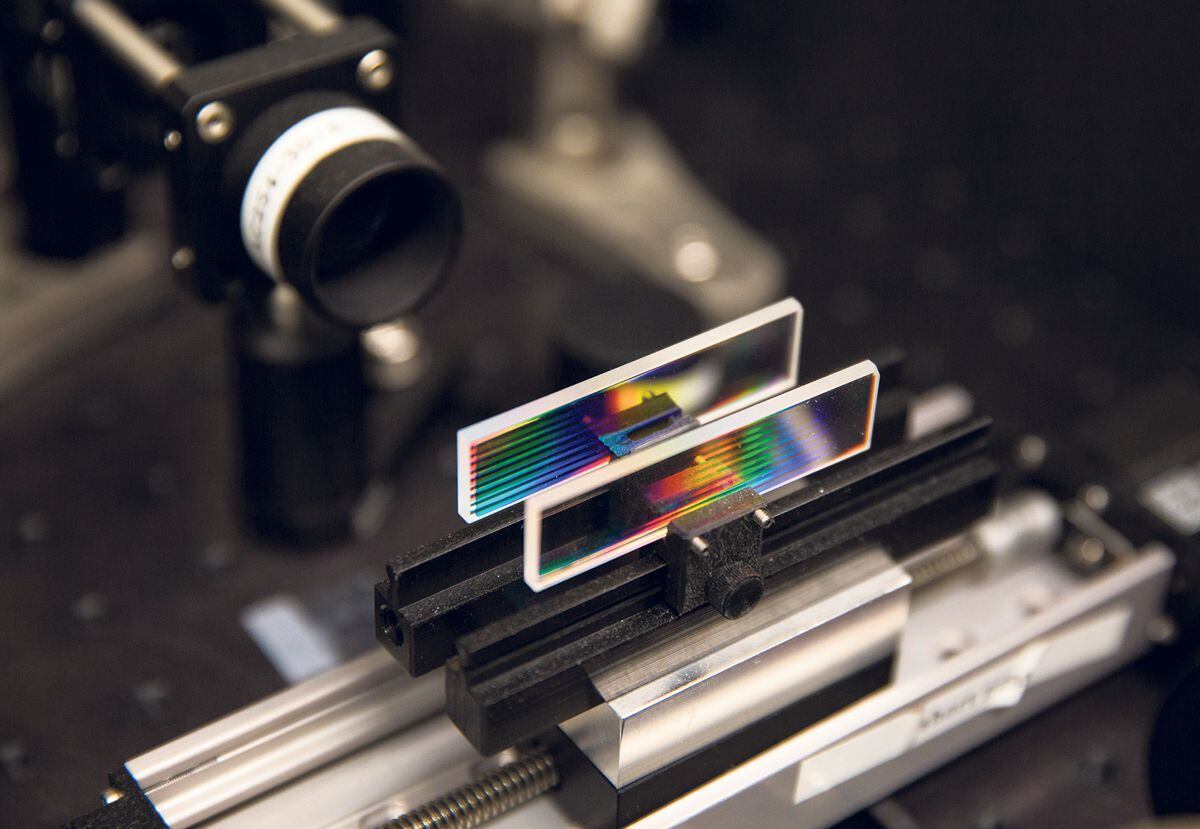Quantum Leaps: Multiplicity’s Impact on Cutting-edge Technologies

Introduction
Multiplicity, the existence of multiple interconnected systems, is revolutionizing the development and application of cutting-edge technologies. By leveraging the interconnectedness of diverse technologies, scientists and engineers can unlock unprecedented capabilities and drive transformative advancements.
Multiplicity and Quantum Computing
Quantum computing, harnessing the principles of quantum mechanics, requires multiple qubits to perform complex calculations. The entanglement of these qubits creates a multiplicity of interconnected states, enabling quantum systems to solve previously intractable problems. This opens avenues for advancements in cryptography, drug discovery, and materials science.
Multiplicity in Artificial Intelligence (AI)
AI systems benefit from multiplicity by integrating various data sources, algorithms, and models. This diversity enriches AI’s learning capabilities, leading to more accurate predictions and intelligent decision-making. Moreover, the interconnection of AI systems allows for collective intelligence, where multiple systems collaborate to solve complex problems.
Multiplicity and Blockchain Technology
Blockchain technology relies on a network of computers to maintain a distributed ledger. Multiplicity enhances blockchain’s robustness and security by dispersing data across multiple nodes. This makes it difficult for attackers to manipulate or corrupt the ledger, ensuring the integrity and immutability of transactions.
Multiplicity in Cybersecurity
Cybersecurity defenses are strengthened by multiplicity through the integration of diverse tools and techniques. By layering multiple security measures, organizations can mitigate vulnerabilities and reduce the risk of cyberattacks. Additionally, the interconnectedness of security systems enables real-time threat detection and response.
Multiplicity and Robotics
Robotic systems are becoming increasingly sophisticated by combining sensors, actuators, and software from multiple sources. Multiplicity allows robots to perceive their environment more accurately, adapt to changing conditions, and collaborate with humans and other robots. This opens up new possibilities in areas such as autonomous navigation, healthcare, and manufacturing.
Multiplicity and IoT (Internet of Things)
The Internet of Things (IoT) connects a vast number of devices, creating a multiplicity of interconnected systems. By leveraging this interconnectivity, IoT applications can optimize resource allocation, enhance remote monitoring, and drive automation. Multiplicity also enables the development of smart cities, where interconnected devices provide valuable insights for urban planning and infrastructure management.
Benefits of Multiplicity

- Enhanced capabilities: Multiplicity allows technologies to leverage the strengths of multiple interconnected systems, unlocking unprecedented performance and functionality.
- Increased efficiency: By sharing data and resources, multiple systems can collaborate to reduce duplication and optimize operations.
- Improved security: Multiplicity makes it more difficult for adversaries to exploit vulnerabilities by dispersing potential compromise points.
- Reduced costs: The integration of multiple technologies can reduce the overall investment required for innovation.
- Accelerated development: Leveraging the synergies of multiple systems enables faster prototyping and time-to-market for new technologies.
Conclusion
Multiplicity is a transformative force in the development of cutting-edge technologies. By embracing the interconnectedness of diverse systems, scientists and engineers can achieve breakthroughs that were once unimaginable. As multiplicity continues to drive innovation, it will shape the future of industries and revolutionize our way of life.## Quantum Leaps: Multiplicity’s Impact On Cutting-edge Technologies
Executive Summary

Quantum computing, artificial intelligence, biotechnology, and blockchain technology are rapidly advancing, creating transformative possibilities for various industries. However, these technologies also pose challenges due to their complexity and interconnections. Embracing a ‘multiplicity mindset’ acknowledges the interconnectedness and interdependence of these technologies, enabling us to harness their collective potential and drive innovation.
Introduction
The world is witnessing unprecedented technological advancements, with quantum computing, AI, biotechnology, and blockchain transforming industries at an astonishing pace. Each technology holds immense promise, but unlocking their full potential requires an understanding of their interconnectedness and the synergistic effects they can create when combined.
FAQs
- What is the ‘multiplicity mindset’?
- Recognizing the interconnectedness and interdependence of technologies.
- Why is it important to embrace multiplicity in emerging technologies?
- Allows us to harness the collective potential of technologies and drive innovation.
- How can multiplicity enhance technological advancements?
- Fosters collaboration, breaks down barriers, and enables the development of holistic solutions.
Subtopics
1. Quantum Computing
- Explores the principles of quantum mechanics to perform complex computations.
- Leverages superposition and entanglement to solve problems intractable for classical computers.
- Potential applications in cryptography, materials design, and drug discovery.
2. Artificial Intelligence
- Emulates human intelligence through machine learning algorithms.
- Automates tasks, analyzes vast amounts of data, and enables personalized experiences.
- Used in fields such as healthcare, finance, and manufacturing.
3. Biotechnology
- Manipulates living organisms or their components to create new technologies.
- Involves genetic engineering, synthetic biology, and tissue engineering.
- Applications range from personalized medicine to biofuels and biomaterials.
4. Blockchain Technology
- Distributes data across a network, making it secure and tamper-proof.
- Facilitates trustless transactions, eliminates intermediaries, and enables decentralization.
- Used in cryptocurrencies, supply chain management, and digital identity.
5. Interconnections and Synergies
- Quantum computing can accelerate the development of AI algorithms.
- AI can enhance the design and optimization of quantum systems.
- Biotechnology and quantum computing can revolutionize drug discovery and development.
- Blockchain can provide secure platforms for AI and biotechnology applications.
Conclusion
Recognizing the inherent multiplicity of cutting-edge technologies unlocks unprecedented opportunities for innovation and transformation. By embracing a collaborative mindset, fostering cross-disciplinary research, and recognizing the interdependence of these technologies, we can harness their collective potential to address societal challenges, drive economic growth, and shape the future we desire.
Keyword Tags
- Multiplicity
- Quantum Computing
- Artificial Intelligence
- Biotechnology
- Blockchain


